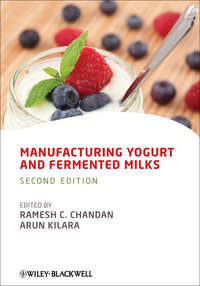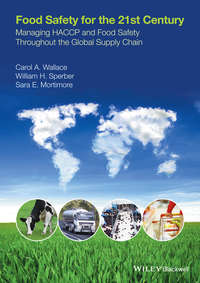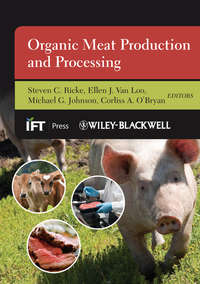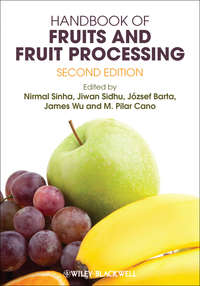Книги жанра мукомольное производство
Melding the hands-on experience of producing yogurt and fermented milks over four decades with the latest in scientific research in the dairy industry, editor Chandan and his associate editors have assembled experts worldwide to writeManufacturing Yogurt and Fermented Milks, 2nd Edition. This one-of-a-kind resource gives a complete description of the manufacturing stages of yogurt and fermented mi…
Mathematical and Statistical Approaches in Food Science and Technology offers an accessible guide to applying statistical and mathematical technologies in the food science field whilst also addressing the theoretical foundations. Using clear examples and case-studies by way of practical illustration, the book is more than just a theoretical guide for non-statisticians, and may therefore be used by…
Rheology is fundamentally important in food manufacturing in two major senses. Understanding the way in which a substance moves and behaves is essential in order to be able to transport and mix it during processing. Secondly, the rheology of a product dictates much of the consumer experience, e.g. in relation to texture and mouthfeel. This book doesn’t overwhelm the reader with complex mathematica…
The Seafood Industry: Species, Products, Processing, and Safety, Second Edition is a completely updated and contemporary revision of Flick and Martin’s classic publication, The Seafood Industry. Covering all aspects of the commercial fish and shellfish industries – from harvest through consumption – the book thoroughly describes the commercial fishery of the western hemisphere. The international a…
Food has a fundamental position in society, ensuring health, happiness and political stability. Consequently, the management of food chains and networks is one of the most important aspects of the modern food industry. Yet food is difficult to handle along long supply chains, with a limited window for storage and handling time, and the risk of spoiling if incorrectly handled or processed. These is…
During the past thirty years, companies have recognized the consumer as the key driver for business and product success. This recognition has, in turn, generated its own drivers: sensory analysis and marketing research, leading first to a culture promoting the expert and then evolving into the systematic acquisition of consumer-relevant information to build businesses. Sensory and Consumer Researc…
In the second edition of this fascinating book an international team of experts have been brought together to explore all major areas of fish learning, including: Foraging skills Predator recognition Social organisation and learning Welfare and pain Three new chapters covering fish personality, lateralisation, and fish cognition and fish welfare, have been added to this fully revised and expanded …
The HACCP (Hazard Analysis and Critical Control Points) system is still recognised internationally as the most effective way to produce safe food throughout the supply chain, but a HACCP system cannot operate in a vacuum. It requires prerequisite programmes to be in place and it can be highly affected by, or dependent upon, other major considerations such as animal, plant, human and environmental …
Organic Meat Production and Processing describes the challenges of production, processing and food safety of organic meat. The editors and international collection of authors explore the trends in organic meats and how the meat industry is impacted. Commencing with chapters on the economics, market and regulatory aspects of organic meats, coverage then extends to management issues for organically …
Tropical and sub-tropical fruits have gained significant importance in global commerce. This book examines recent developments in the area of fruit technology including: postharvest physiology and storage; novel processing technologies applied to fruits; and in-depth coverage on processing, packaging, and nutritional quality of tropical and sub-tropical fruits. This contemporary handbook uniquely …
This exciting new book grew out of an international symposium held at FAO, Rome in July 2008, but it is not just a collection of papers from that symposium. Rather, the publication brings together work on social-ecological marine research that cuts across disciplines, identifies key common elements and approaches that promote resilience of marine social-ecological systems in the face of global cha…
Fruits are botanically diverse, perishable, seasonal and predominantly regional in production. They come in many varieties, shapes and size, colors, flavors and textures and are an important part of a healthy diet and the global economy. Besides vitamins, minerals, fibers and other nutrients, fruits contain phenolic compounds that have pharmacological potential. Consumed as a part of a regular die…
A comprehensive reference for the poultry industry—Volume 1 describes everything from husbandry up to preservation With an unparalleled level of coverage, the Handbook of Poultry Science and Technology provides an up-to-date and comprehensive reference on poultry processing. Volume 1 describes husbandry, slaughter, preservation, and safety. It presents all the details professionals need to know be…
Novel Plant Bioresources: Applications in Food, Medicine and Cosmetics serves as the definitive source of information on under-utilized plant species, and fills a key niche in our understanding of the relationship of human beings with under-utilized plants. By covering applications in food, medicine and cosmetics, the book has a broad appeal. In a climate of growing awareness about the perils of b…
Food proteins and bioactive peptides play a vital role in the growth and development of the body’s structural integrity and regulation, as well as having a variety of other functional properties. Land animal-derived food proteins such as collagen and gelatine carry risks of contamination (such as BSE). Marine-derived proteins, which can provide equivalents to collagen and gelatin without the assoc…














